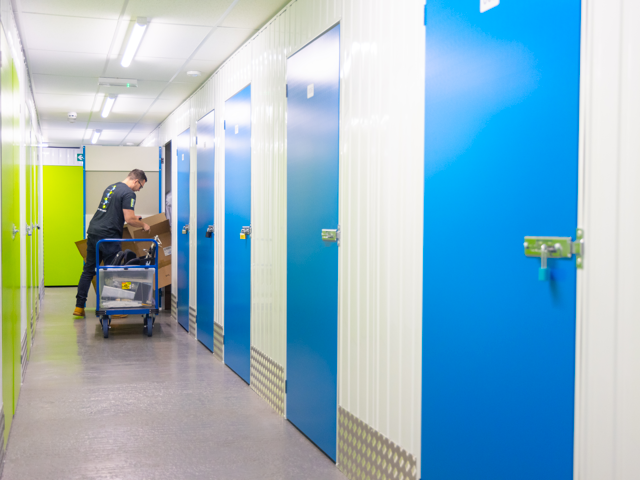Are you getting the most out of your storage unit? For many, this might mean being able to pack in as much as possible. For others, it means having an efficient space for off-season items and business tools, a place you can visit as often as you like for things you need, but don’t need all the time.
Let’s take a look at some common storage unit sizes, what you can fit in them, and how best to organise them. One thing we do not recommend is packing them tightly floor-to-ceiling and back-to-front. Yes, you’ll be able to fit a lot in them, but remember that you need to access what’s inside, too. By explaining these sizes, we hope to give you an idea of what to expect from small, medium and larger units.
First, there are some basics you should know for every unit size.
Use mostly the same sized boxes:
We recommend small boxes. These types are sturdy and great for heavy things like books, but they also work well for clothing and even bed sheets.
Stack heavier boxes on the bottom:
Your heaviest boxes should go on the bottom of stacks with lighter boxes on top. Naturally, this works best if you use same-sized boxes so they stack well. In a stack, you may start with three boxes of books, stack on another box of paperwork, one with pots and pans and reinforced with packing paper, then a couple of clothing boxes on the very top.
Packing Paper:
Put in some crumpled packing paper in any box with extra space to fill it out and ensure the stack stays sturdy.
Label and inventory your boxes:
This can be time consuming but worthwhile. In the very least, label each box with the room it belongs in and its general contents, such as, “Nick’s Bedroom. Tee-Shirts.” You can go a step further by noting what’s in each box, which will make it easier to find the exact item you want later.
Disassemble furniture if possible:
Not all furniture you’ll want to store is made to be taken apart and put back together, but if it is, this will help you save space. Keep the parts together, including the screws and small connective parts in a plastic bag taped to part of the unit.
Now, let’s consider the various unit sizes.
25 sq ft – Small Unit
Having a 25 sq ft unit is like adding the space of an additional walk-in closet to your home. In it, you can store seasonal decorations, off-season clothes, family heirlooms, and some sports equipment. If you’re using it for your business, store overstock inventory, displays, records, and tools. In such a small unit there’s probably no need for an aisle, though you will have to move boxes aside to get to the very back.
100 sq ft – Medium Unit
This is the most popular size, and it will hold the contents of about two rooms in your home or office. You might use one to store an extra sofa, TV, entertainment centre, and a few stacks of boxes. It’s great for sports and outdoor equipment, too, and a great size to declutter your home and garage while still keeping things you need. Consider leaving a little room in the middle to make it easier to access everything. Maybe you’ll use it to store off-season stuff on one side and business inventory on the other.
200 sq ft – Large Unit
This size is perfect for moving families. A 200 sq ft unit can hold the entire contents of a 5-bed house. So, if you have a family, are moving, and need somewhere to keep all your stuff between leaving your current home and getting into the new one, this is the unit for you.
These units are fantastic for bed sets, refrigerators, and other oversized items. Small businesses will appreciate the large amount of room for inventory, samples, displays, and tools.
With this unit, you’ll definitely want to pack your most-frequently accessed stuff in front. Leave an aisle through the middle so you can get to the stuff in the back more easily, too.
We have a range of ten unit sizes available so we should be able to fulfil all your storage requirements. For more information, please visit out unit sizes page. Any items mentioned in the blog can be purchased at the box shop.

